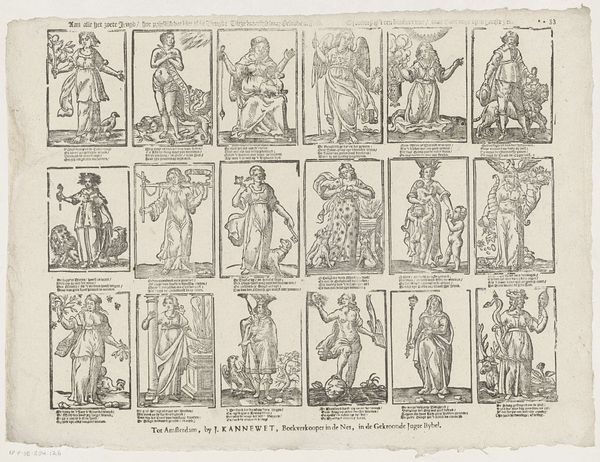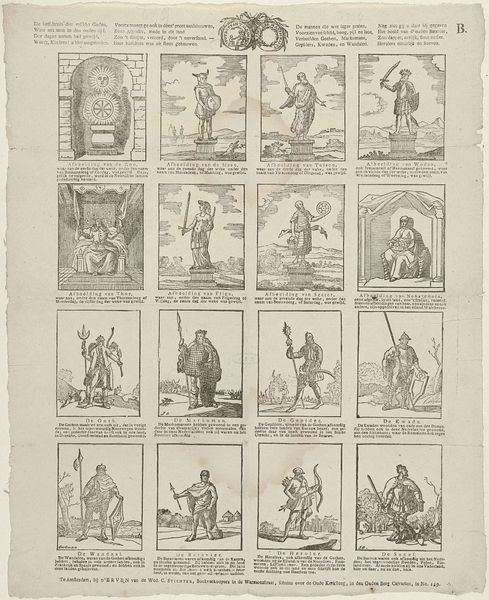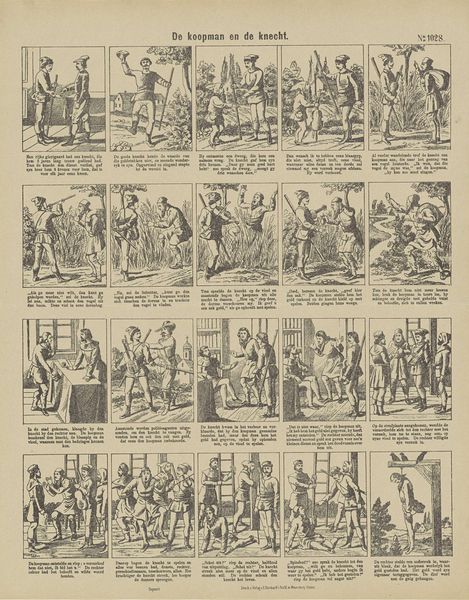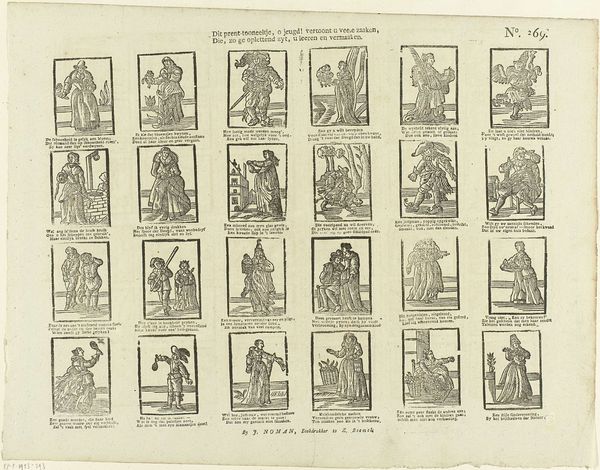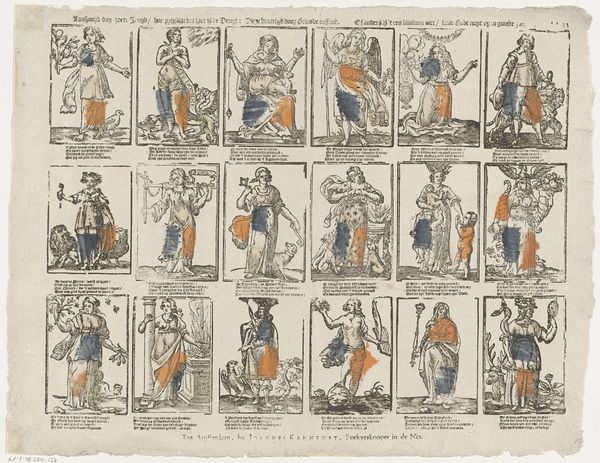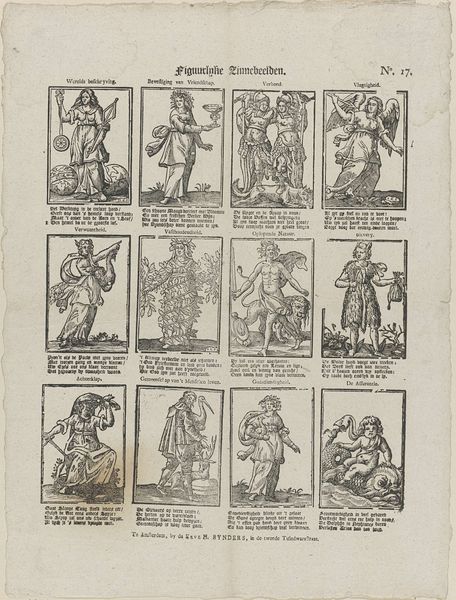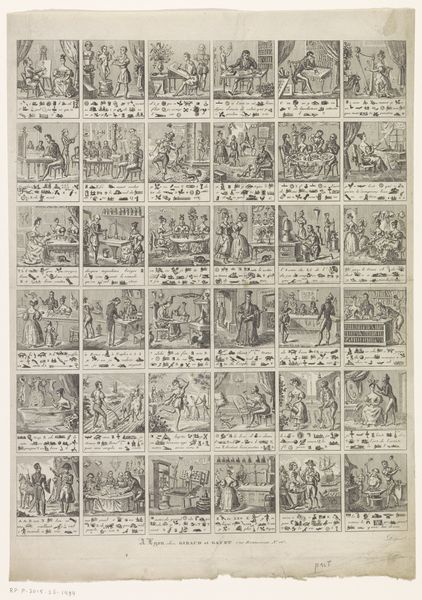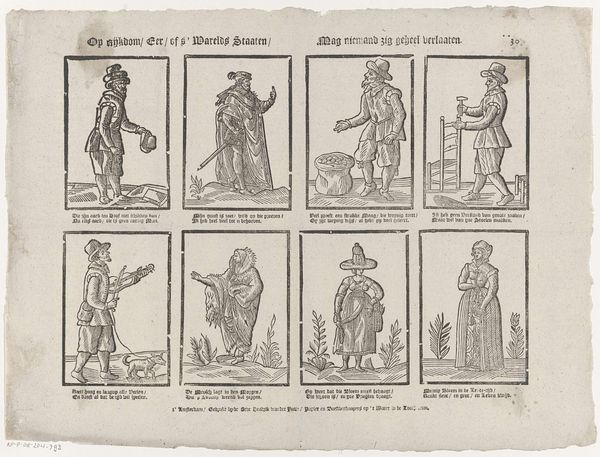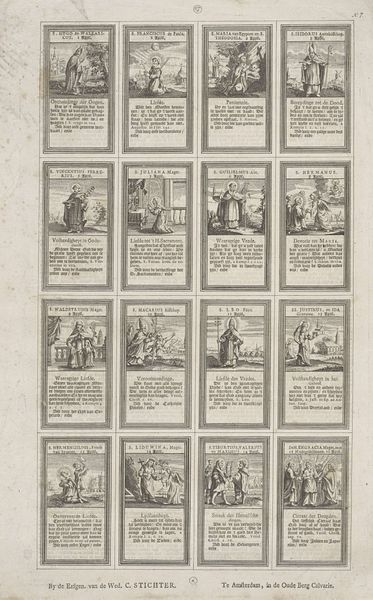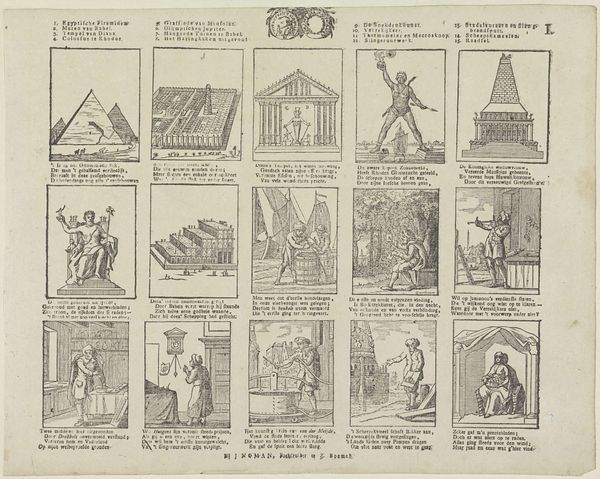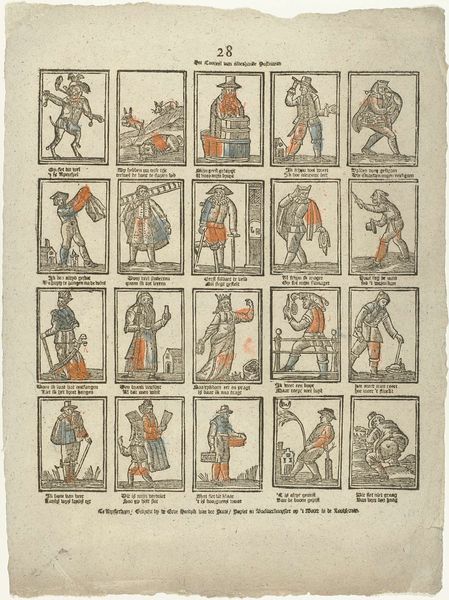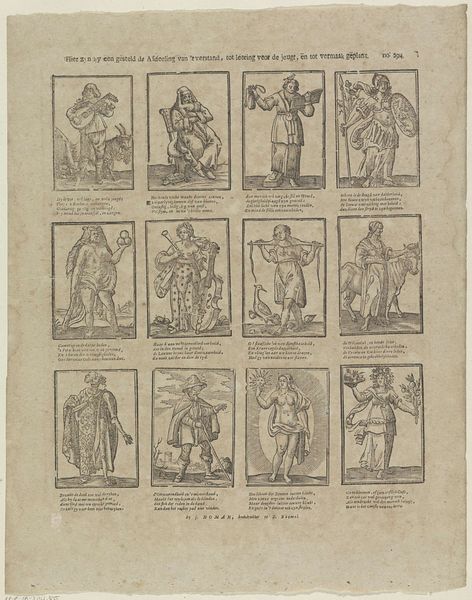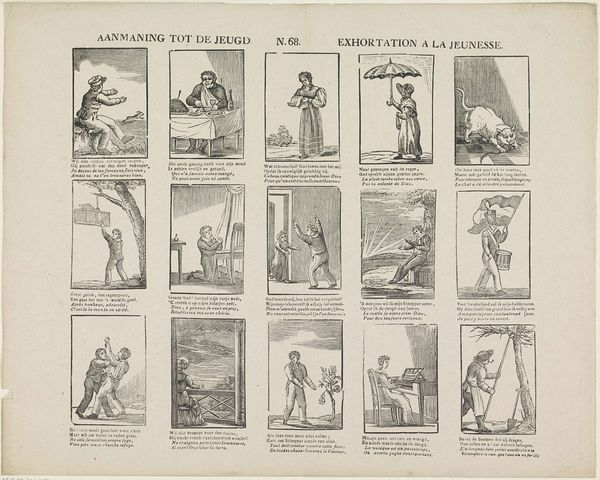
Mythologische figuren, de dagen van de week en verschillende volksstammen 1806 - 1830
0:00
0:00
print, engraving
#
narrative-art
# print
#
figuration
#
history-painting
#
engraving
Dimensions: height 315 mm, width 400 mm
Copyright: Rijks Museum: Open Domain
Curator: Let's turn our attention to a print in the Rijksmuseum's collection: "Mythological figures, the days of the week and various tribes" created sometime between 1806 and 1830 by Jan Oortman. My first impression is it’s rather… didactic. Editor: It strikes me as a curious arrangement of miniature scenes, almost like a page torn from an illustrated encyclopedia. There’s a feeling of trying to organize and classify the world in a rational manner, which feels characteristic of the period in which it was created. Curator: Absolutely. Note the deliberate ordering, the way each panel features figures meticulously rendered through engraving. It points to the labour-intensive process behind such prints in that era, when dissemination of knowledge relied heavily on printmaking. The quality of line, the uniform texture – they are a product of a craftsman's dedication. Editor: Yet those very figures – each representing a day, a deity, a tribe – carry echoes of cultural beliefs. Consider the figure associated with "Zondaag," or Sunday: a radiating sun face. The text connects it to solar worship, rooting the day's meaning in ancient traditions. Curator: Indeed, and understanding printmaking reveals the intention behind disseminating such imagery. It wasn’t simply about aesthetics, but about the affordable production of knowledge. This artwork then reveals a wider consumption and social distribution of information and these figures at the time. Editor: Precisely. Looking at other panels, we see diverse tribes identified – Gepiden, Wandals – reflecting 19th-century Europe's fascination with categorizing peoples and understanding their history and origins, though presented with limited awareness, of course. Curator: That categorization in and of itself suggests an inherent engagement with power and coloniality. Even in the choice of materials - the availability and relative cost of the paper and inks used - you see economic hierarchies shaping the consumption of ideas. Editor: True, and each viewer would respond differently to these representations and their meanings based on personal belief and local interpretations. We glimpse persistent motifs woven across centuries of thought. Curator: Seeing through both perspectives I would suggest helps us to acknowledge how its imagery functioned then and how we comprehend its symbolism now.
Comments
No comments
Be the first to comment and join the conversation on the ultimate creative platform.
